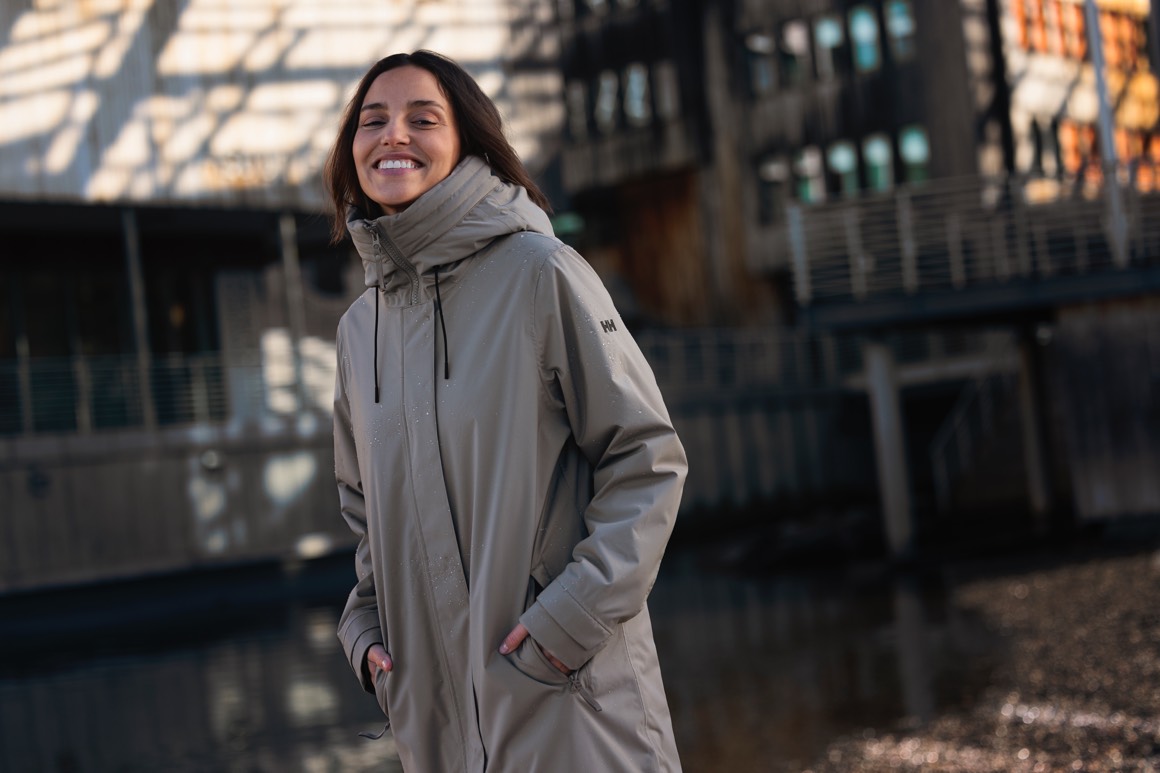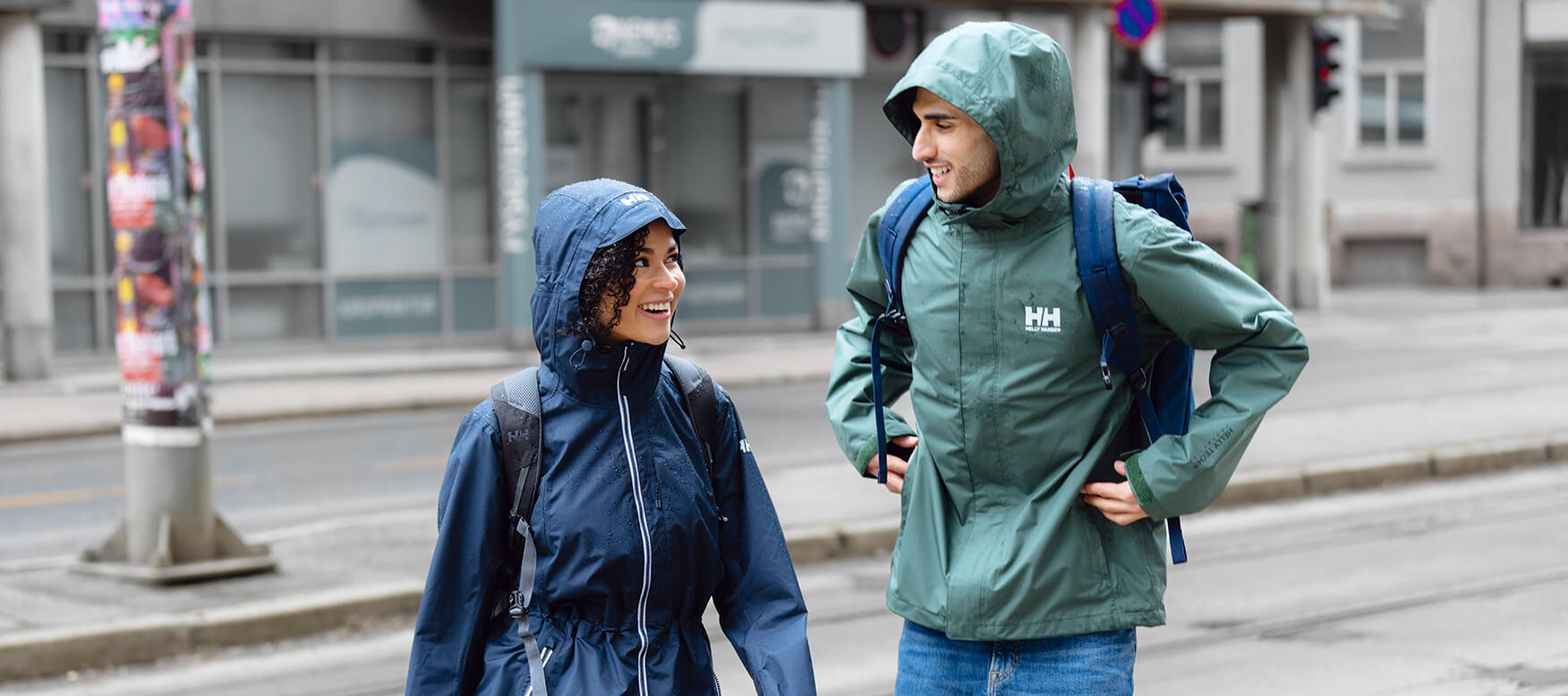
How to Choose the Best Rain Jacket
October 22, 2025
5 min read
Rain jacket, raincoat, or simply a shell—whatever you call it, do you know what to look for?
Rain doesn't wait for convenient timing. Whether you’re halfway up a mountain trail or stepping off a sailboat, the right rain jacket can make the difference between a memorable adventure and a miserable experience. Choosing the best rain jacket means understanding your needs, the technology behind waterproof fabrics, and the essential features for your intended activities.
The key to finding the best rain jacket is matching the right balance of protection, breathability, and durability to your activities. From lightweight packable shells for emergencies to robust three-layer jackets for extreme weather, every type serves a different purpose. Knowing the differences between these options will help you select the best waterproof jacket for your adventures.
Understanding Rain Protection
Waterproof vs Water-Resistant: What's the Difference?
Waterproof rain jackets provide full protection by using technical membranes to block rain, while still letting sweat vapor escape. Water-resistant jackets, in contrast, repel only light moisture and can soak through in heavy or prolonged rain. For hiking or any outdoor pursuits where unpredictable weather is a concern, investing in a waterproof jacket is crucial for comfort and safety.
Breathability and Why It Matters
High-quality breathable rain jackets keep you from feeling clammy or overheated by allowing sweat vapor to escape while blocking out rain. This is essential during high-output activities such as hiking, mountaineering, or sailing, when managing moisture from inside and out matters just as much as protection from the elements. If you plan on staying active, prioritize a breathable waterproof jacket with features such as pit zips or ventilation panels.
Construction Types: 2-Layer, 2.5-Layer, and 3-Layer
Rain jackets come in three primary constructions: 2-layer styles are best suited for light rain or casual wear, providing a soft and comfortable feel. 2.5-layer jackets focus on lightweight packability—ideal for hiking, travel, or situations where space matters. Finally, 3-layer jackets deliver maximum durability and are the best waterproof jackets for demanding weather, such as alpine excursions or continuous downpours. Each type has its pros and cons, so consider your usual conditions and activity level when choosing.
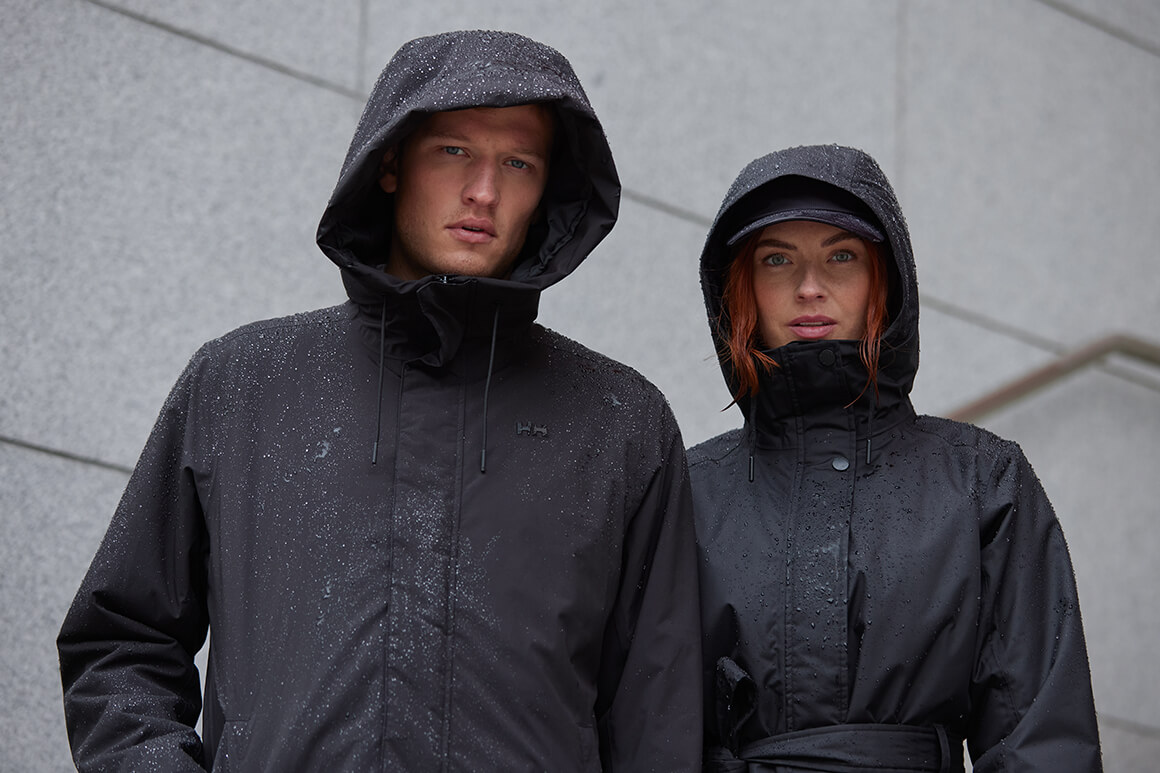
Shop the look
HELLY TECH® Explained
What Makes HELLY TECH® Unique
Our waterproof/breathable technology is called HELLY TECH®. It is the outer layer and final defense between you and the elements. To make this technology as waterproof and breathable as possible, every detail is thoughtfully considered to enhance performance — from the taped seams, to the membrane used, all the way down to the treatment of the fabric.
HELLY TECH® is featured in many of our rain jackets, and has been refined through years of sailing and outdoor adventures to provide reliable protection in harsh environments.
Who Benefits Most from Breathable Jackets
Anyone who spends extended periods outdoors—especially hikers, sailors, and alpinists—will benefit from a rain jacket that balances breathability and waterproofing. For example, the Seven J Jacket is a versatile rain jacket that’s a good choice for city commuters seeking lightweight but robust coverage from rain and wind, while the Odin 9 Worlds 3.0 Shell Jacket is a high-performing 3-layer hardshell jacket for adventurers who need maximum protection against the elements.
Favorite breathable rain jackets

Men's Seven J Rain Jacket

Women's Seven J Rain Jacket

Men's Dubliner Waterproof Jacket

Women’s Vancouver Rain Jacket

Men's Loke Shell Jacket

Women's Loke Jacket 2.0

Men's Vika Jacket

Women’s Crew Hooded Midlayer Sailing Jacket 2.0
Choosing the Right Rain Jacket for Your Activity
Hiking and Trekking
Rain jackets made for hiking are often referred to as a shell jacket. A lightweight hiking shell should always be waterproof and breathable. If it isn't, it'll become even wetter on the inside than the outside.
The best rain jackets for trekking should have some other key features, such as:
- Smart ventilation (underarm vents can help a lot during intense hikes)
- Backpack-compatible construction (for access to pockets and zippers while wearing a backpack)
- Waist-length construction to ensure mobility and avoid "bunching"
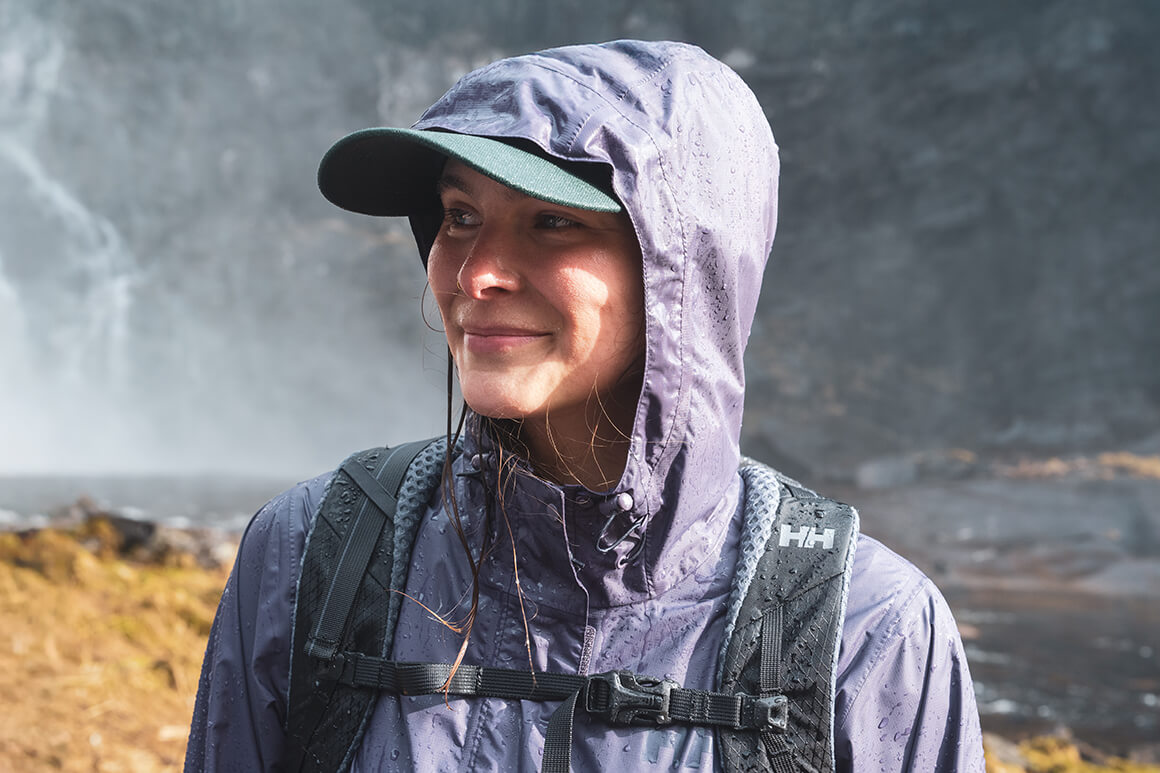
Shop the look
Alpine & Mountain Adventures
For alpine climbs and mountain adventures, durability and compatibility with layering are key. Look for 3-layer alpine jackets that withstand abrasions and extreme weather. Choose longer cuts, and reinforced panels for extra protection. Options like the new Odin 9 Worlds Infinity Shell Jacket is designed for maximum protection and mobility in alpine environments, while some of our ski jackets can provide the extra warmth needed for cold days on the mountain.
Sailing & Offshore
At sea, you need best‑in‑class waterproof and windproof protection. Drawing on Helly Hansen’s storied sailing heritage, our sailing jackets blend innovative technologies with insights from professional sailors, and are trusted in iconic regattas and the harshest offshore conditions. The right jacket depends on the type of sailing you do. Explore this guide to choose the sailing gear that’s right for you.
Everyday & Urban Wear
For city commuters and everyday use, our urban rain jackets blend weatherproofing with modern design to keep you dry. Prioritizing packable builds and comfortable fits, the best commuter waterproof jackets pair stylish silhouettes with proven technical performance, so you never have to choose between function and form.
Features That Matter Most
Beyond waterproof, breathable construction, consider features that fit your needs, activities, and local climate.
Durable Water Repellent Finish
A durable water repellent (DWR) finish keeps water beading on the surface instead of soaking in, helping to maintain breathability and comfort. Over time, DWR treatments can wear off, so reapplying regularly is essential for keeping your rain jacket performing at its peak.
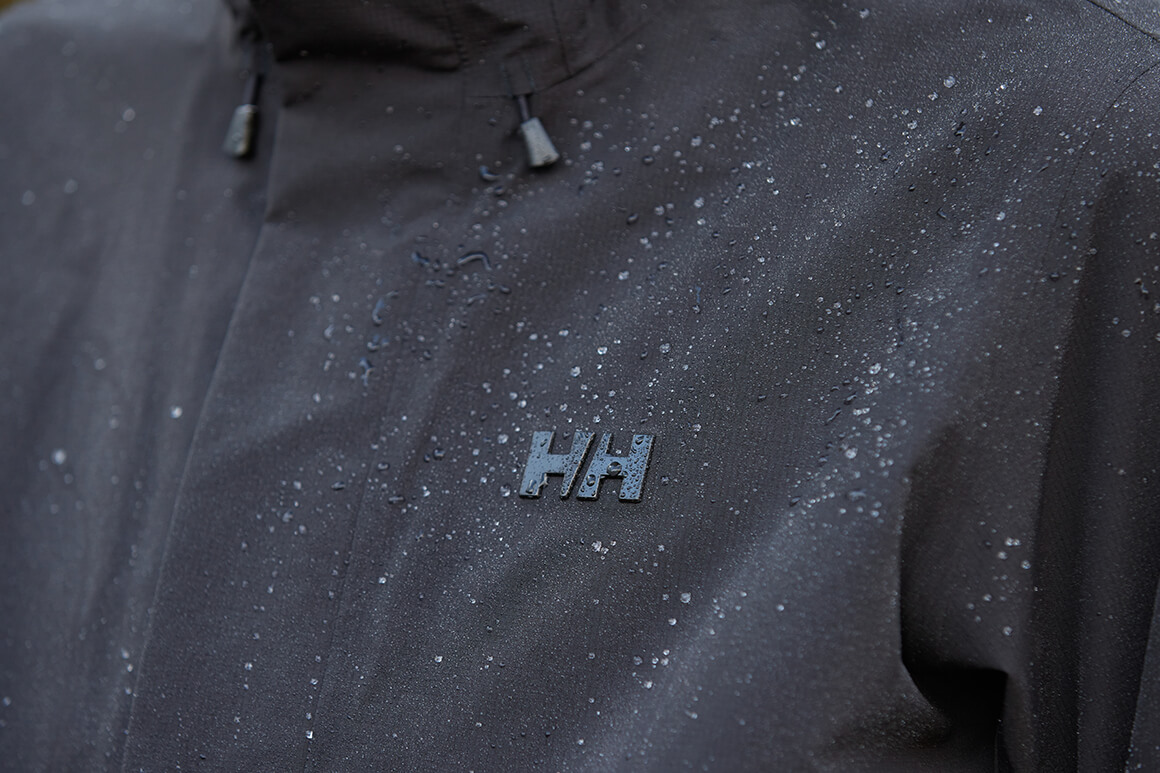
Seam Sealing & Taped Construction
The best waterproof jackets use fully seam-sealed and taped construction to block leaks at the seams. This ensures water stays out in any weather, so always check for this feature when choosing your next jacket.
Hood and Collar Design
A well-designed adjustable hood with a stiff brim can mean the difference between clear sightlines and a damp face in the rain. High collars offer added defense against wind and water, making these features particularly valuable for the best hiking rain jacket or sailing shell.
Fit, Length, and Layering Room
Choose a jacket with a fit that matches your activities: a longer cut works for sailing or everyday commutes, trim athletic fits are best for the mountains, and roomier cuts let you layer up in cold, wet conditions. Your raincoat should provide full motion and accommodate any layers you need to wear underneath.
Pockets, Zippers, and Ventilation
Look for waterproof zippers, storm flaps, pit zips for extra ventilation, and pockets placed above pack hipbelts. Each feature makes a difference in changing weather, especially when storage and airflow are priorities.
Types of Rain Jackets by Weather Conditions
Lightweight Packable Shells
A lightweight packable rain jacket is perfect to stash in your daypack or commuter bag for emergency showers or light, unpredictable rain. Their compact size and weight make them ideal for travel, day hikes, or city living.
Insulated Rain Jackets for Cold, Wet Weather
Choose an insulated rain jacket when temperatures drop—these combine warmth with waterproofing, making them great options for those seeking a warm rain jacket or a waterproof winter coat for brisk, rainy days.
Shop the look
Accessories for Complete Protection
Sometimes, you need head to toe protection. Don't forget rain pants, rain boots, and even a rain hat for serious downpours.
Rain Pants
Pair your rain jacket with waterproof pants for full wet‑weather protection—especially in persistent rain on your commute or next hike. Look for designs with side zips for ventilation and easy layering.
Hats, Gloves & Waterproof Layers
Don’t overlook accessories like waterproof gloves, rain hats, and technical base layers to complete your weatherproof outfit. These add further protection in relentless rain and help maintain warmth and dryness next to your skin.
Rain Boots
Don’t forget rain boots—choose waterproof rubber with grippy soles for secure traction. Prioritize a comfortable fit with your socks to keep feet dry and steady in wet conditions.
Backpacks & Duffels with Waterproofing
Care & Maintenance
Washing & Restoring DWR
Properly washing your rain jacket with technical solutions (never fabric softener) and restoring its DWR coating extends its life and maintains top performance. Refresh the DWR treatment if you notice water stops beading on the outer fabric.
Repairing Small Tears or Damage
Quickly repairing small rips with patches or seam sealers (such as the Helly Hansen repair kit) will preserve your jacket’s waterproofing and keep it going strong for many more adventures.
